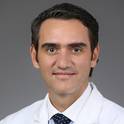
Introduction: In March 2017, the Fire Officers Association of Miami-Dade employed the Field Assessment Stroke Triage for Emergency Destination (FAST-ED) scale to better identify large vessel occlusion (LVO) strokes. Individuals with a score≥4 bypass other centers for a comprehensive stroke center, whereas those with a score ≥6 also have the interventional team activated from the field. The FAST-ED scale was developed using a retrospective cohort of ischemic strokes and TIAs. There have been no prospective, real world examples on the performance of this tool when used in the field by emergency personnel.
Methods: Stroke alert cases brought to our center byFOAMD during March 2017-August 2018 were analyzed. We used the FAST-ED score documented on the EMS run sheet and examined the incidence of LVOs and treatment rates for applicable cases. Cases without FAST-ED scores were excluded.
Results: A total of 686 patients met criteria. Of these, 354 (52%) had ischemic stroke, and 135 (20%) had a LVO. Of all LVOs, 39% had score of ≥6, whereas 72% had a score of ≥4. Out of all stroke alerts with a FAST-ED score ≥4, 97 (31%) had a LVO and 72 (23%) were treated with mechanical reperfusion (MR). Of all stroke alerts with a score ≥6, 53 (38%) had a LVO and 43 (31%) were treated endovascularly. The endovascular team was activated from the field on 92 cases with a score ≥6 during off hours, but only 30 (33%) had MR.
Discussion: In a real world experience of the FAST-ED score being completed in the field, the detection of LVOs was much lower than in the initial report. Almost 1/3 of cases with a score of ≥4 and more than 1/3 with ≥6 had a LVO, and most of those cases were treated endovascularly. Only 1/3 of field activations led to an endovascular procedure.
Available at: http://works.bepress.com/felipe-delosrioslarosa/11/
